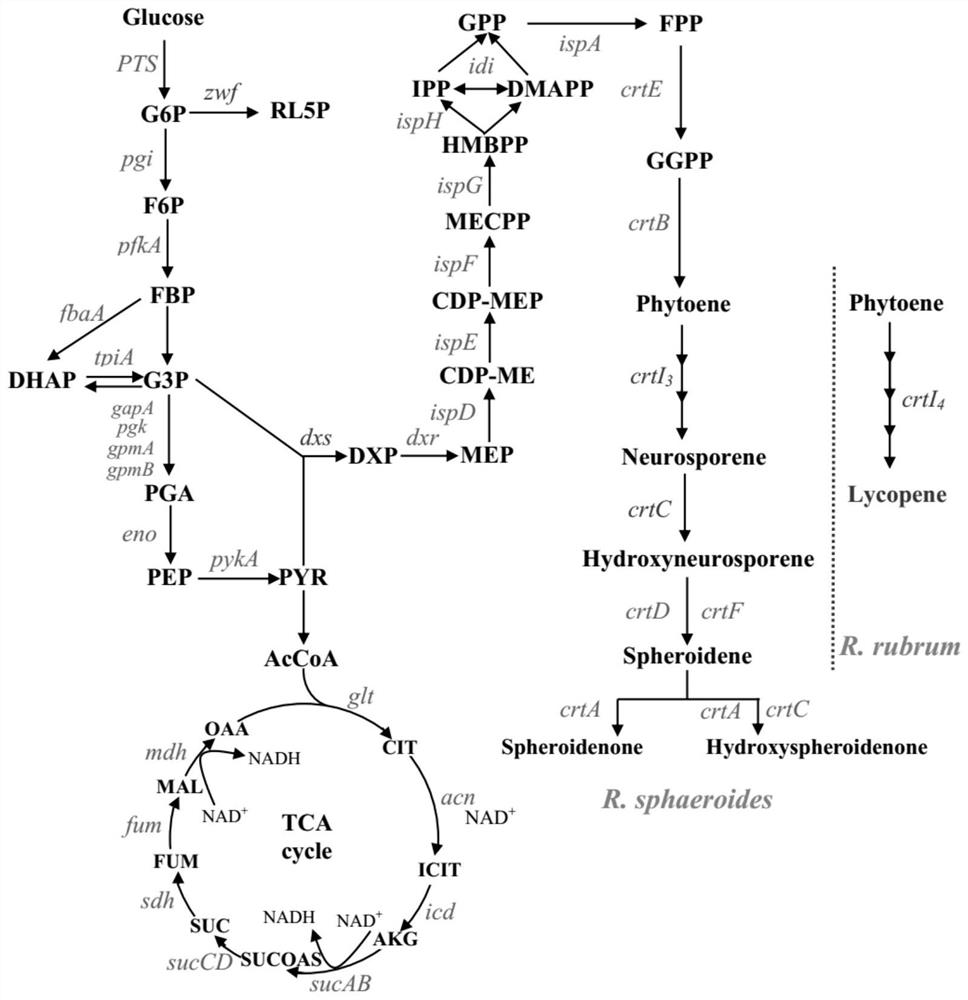A lycopene-producing rhodobacter sphaeroid engineering strain and its construction method
A technology of Rhodobacter sphaeroides and lycopene, which is applied in the field of metabolic engineering, can solve the problems of complex metabolic regulation, increased production cost and safety, and lack of molecular manipulation technology of B. trispora, and achieves the effect of strong strain stability.
- Summary
- Abstract
- Description
- Claims
- Application Information
AI Technical Summary
Problems solved by technology
Method used
Image
Examples
Embodiment 1
[0063] according to figure 1 Lycopene biosynthetic pathway in the shown Rhodobacter sphaeroides, construction of Rhodobacter sphaeroids engineering strains producing lycopene, the specific construction method is as follows:
[0064] 1. crtI of Rhodospirillum rubrum 4 Gene replacement of crtI in Rhodobacter sphaeroides 3 Gene
[0065] Using the gene of Rhodospira rubrum ATCC 11170 (NCBI website: https: / / www.ncbi.nlm.nih.gov / nuccore / NC_007643.1) as a template, the primer crtI was designed according to the principles of overlap extension PCR primer design 4 -F and crtI 4 -R, using the fidelity enzyme Pfu PCR to amplify the phytoene four-step dehydrogenase gene crtI of Rhodospirillum rubrum ATCC 11170 4 , the PCR amplification system is: 2×Pfu PCR mix 10μL, crtI 4 -F (10 μM) 1 μL, crtI 4 -R (10 μM) 1 μL, Rhodospirillum rubrum gene (20 μg / μL) 1 μL, ddH 2 O7 μL, the reaction program was: denaturation at 94°C for 3 min, followed by denaturation at 94°C for 30 s, annealing at 6...
PUM
 Login to View More
Login to View More Abstract
Description
Claims
Application Information
 Login to View More
Login to View More - R&D
- Intellectual Property
- Life Sciences
- Materials
- Tech Scout
- Unparalleled Data Quality
- Higher Quality Content
- 60% Fewer Hallucinations
Browse by: Latest US Patents, China's latest patents, Technical Efficacy Thesaurus, Application Domain, Technology Topic, Popular Technical Reports.
© 2025 PatSnap. All rights reserved.Legal|Privacy policy|Modern Slavery Act Transparency Statement|Sitemap|About US| Contact US: help@patsnap.com

